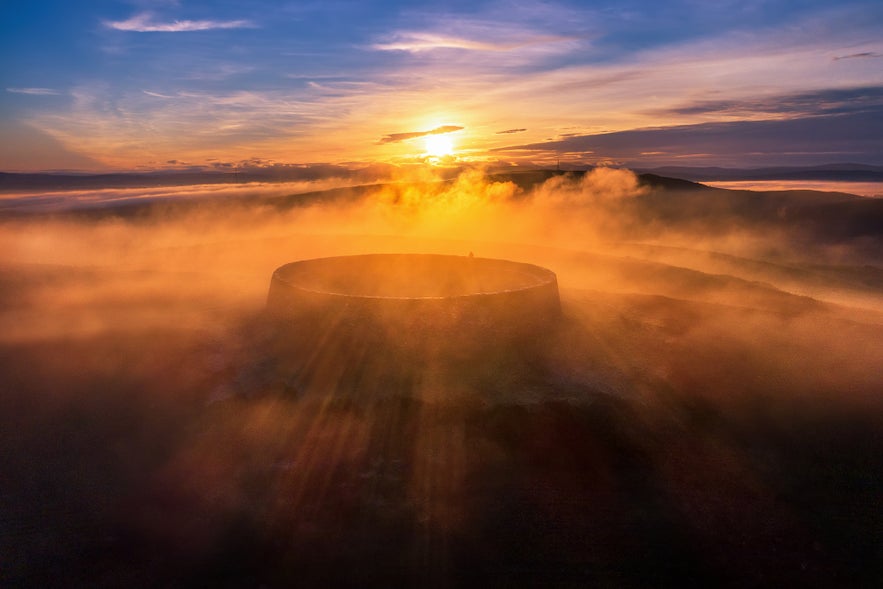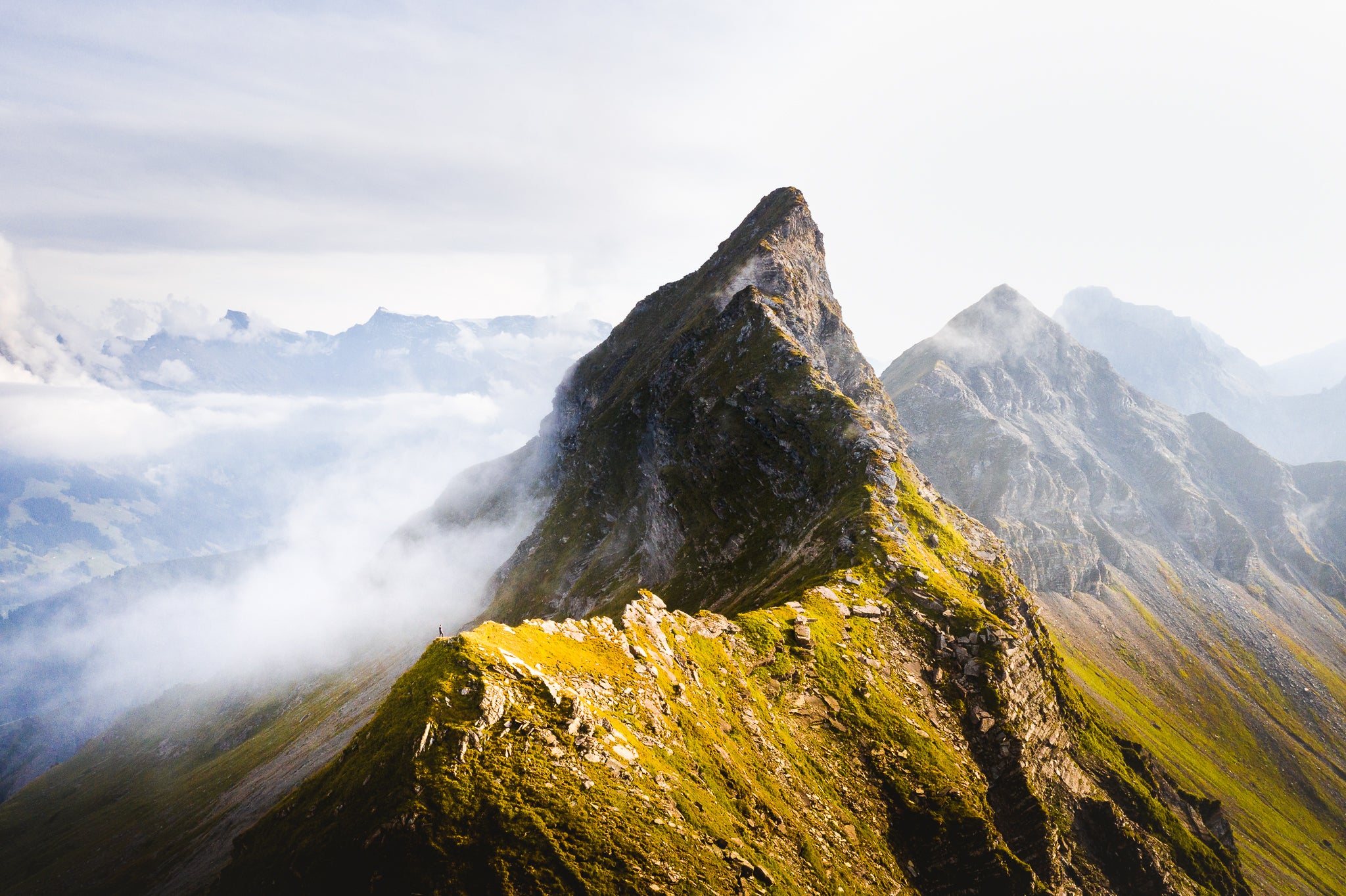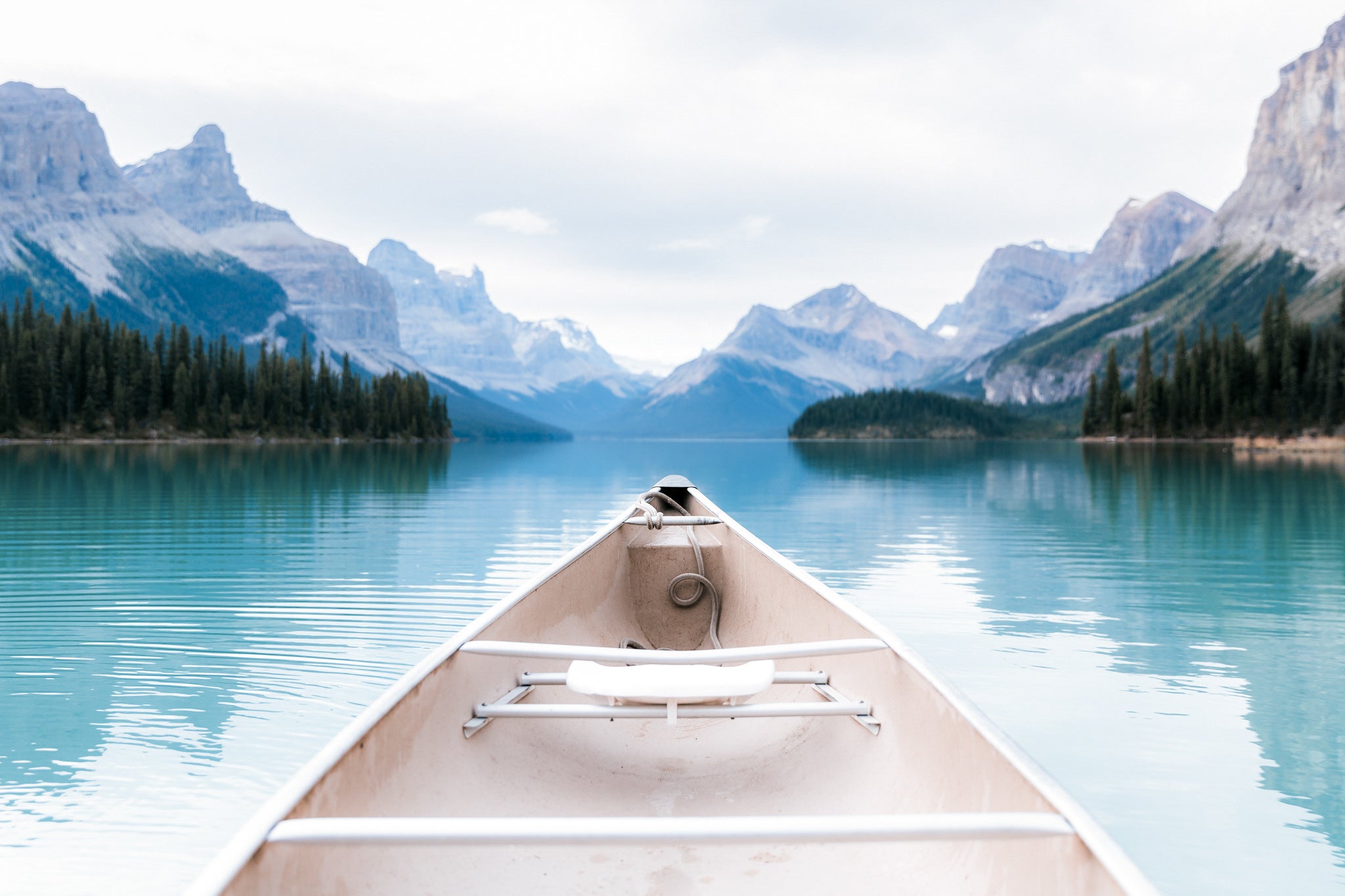
"You don't get lost in Ireland, you discover". Those are the words of Gareth Wray, an Irish landscape and aerial photographer who has made it his goal to bring the beauty of Ireland to the masses.
- Check out this Scotland Photography Tour | Isle of Skye & Scottish Highlands
- Explore these articles on Landscape and Nature Photography
- Find out about The Top Cameras for Landscape Photography in 2020
Having spent large swathes of time exploring his homeland, Gareth has realised his passion for capturing the truly spectacular scenery that is hidden away and hopes that he will be able to inspire others to do so too. This month, we had a chat with Gareth about how he got into photography, what it is that inspires him, some of his favourite locations to shoot in Ireland, as well as where he sees his photography heading in the future.
 Gareth Wray is a landscape and aerial photographer based in Ireland. Photo by: 'Gareth Wray'.
Gareth Wray is a landscape and aerial photographer based in Ireland. Photo by: 'Gareth Wray'.
Hello Gareth, thank you for chatting with us at Iceland Photo Tours. Can you tell our readers a little about who you are and how you got started with photography?
I am an Irish born landscape and aerial photographer who has a deep passion for Irish landscapes, particularly those along the ‘Wild Atlantic Way’. My main goal is to boost tourism by creating awareness towards Ireland’s hidden beauty. Through my photos, each accompanied by history and story blog, I endeavour to bring your mind into my scenes.
I’m a married 38 year old with 2 young sons. As you can imagine, life is very busy with young kids and work but I always set aside free time for traveling, capturing and showcasing my photography. I started photography as a hobby in 2012. The reason I started photography was that on my wedding day, the hired wedding photographer let me capture a photo on his DSLR camera, so afterwards I wanted one! My wife knew that I was always using my smartphone to capture scenes and agreed I should buy a small Nikon DSLR. I have not stopped loving photography ever since.
 Giant's Causeway, Antrim Coast. Photo by: 'Gareth Wray'.
Giant's Causeway, Antrim Coast. Photo by: 'Gareth Wray'.
From where does your interest and passion for landscape photography originate?
As a child in the 80s, my parents would take me on drives across our Irish countryside, mainly exploring the Wild Atlantic Way. Even at such a young age, I remember being in awe of the stunning scenery around every corner and how we could drive through a forest, over a large mountain, past some lakes to arrive on a stunning golden sandy beach with an old shipwreck sitting in the middle of it, all within a few miles radius!
When I turned 17, I got my own car but strangely found myself retracing all the routes and places my parents showed me. Years later, when I had kids of my own, my wife and I started taking them along to these same stunning places of beauty. I would spend most of the day photographing the scenery on my smartphone as I was so proud of our country and wished to show everyone the beauty of Ireland. Soon, we realised that smartphone images were of terrible quality. I invested in my first DSLR Nikon camera in 2012 which started the ball rolling towards my future as a professional landscape photographer.
 An Port Donegal. Photo by: 'Gareth Wray'.
An Port Donegal. Photo by: 'Gareth Wray'.
Who or what has been your biggest influence in photography so far and why?
A few of my biggest influences in landscape photography are Peter Lik and Chris Burkard. I remember visiting Peter Lik’s gallery in Las Vegas before I ever owned a camera and was totally blown away by his large format wall prints!
I have been following Chris Burkard’s work on Instagram these past few years and I can feel so much passion in his work, his photos transports my mind to those adventures he often takes. Someday I aim to travel further around the world like him.
- See also: Interview with Chris Burkard
What was the best piece of advice you received when you were first getting started with photography?
To be straight, I sadly never received much great advice starting out as nobody I knew was into photography and any photographers I met out on locations never seemed to want to talk much. Maybe they were so absorbed in their capturing or maybe they just didn’t want to give away any trade secrets?
If I was to give advice to anyone starting out in the world of landscape photography, I'd tell them to get lost! I don’t mean this in the rude sense either, I literally mean “get out there and get lost”. Most of my greatest scenes are from locations I stumbled across randomly whilst driving around Ireland, intentionally getting lost on purpose! Sometimes over-planning and researching a location makes you rush there, often overlooking beauty along the way that sometimes looks better than your over-planned scenes.
There’s no road nor path I won’t venture to get you that perfect shot! In my own words “You don’t get lost in Ireland; you discover.”
 Ballyness Bay, Tory Island. Photo by: 'Gareth Wray'.
Ballyness Bay, Tory Island. Photo by: 'Gareth Wray'.
Where do you draw your creative inspiration from?
My main source of inspiration actually comes from the stunning natural landscapes all around me. I am genuinely proud of Irish landscapes that when I see a new potential scene, an obsession to photograph it kicks in so that I can show off Ireland to the rest of the world. I get so absorbed in my surroundings that it continually creates new inspiration to seek new hidden scenes to absorb my body and mind into, which I believe will never end for me.
- See also: How to Get Creative with a Fisheye Lens
What has been your biggest success in photography?
Now I’m definitely going to underwhelm you all but the fact is that I never actually look at my work as being a success. I know all too well I have room to improve just like everything around us. I always look at my newest photos and visualise how they can be better on a return shoot. I have had many photos published in books, magazines, adverts, signage, all around the world, which I guess are my many little successes.
 Beltany standing stone circle. Photo by: 'Gareth Wray'.
Beltany standing stone circle. Photo by: 'Gareth Wray'.
What has been your biggest failure in photography and how did you learn from it?
To be honest there aren’t many big failures, only many little ones such as not researching a planned location enough and arriving 10 minutes late after the sun has set or walking too close to edges and slipping, damaging myself or my equipment but trust me! After a few falls onto wet beach rocks you will soon learn to be careful. I have also learned to arrive a little earlier to feel the area and pre-plan a composition. One other thing is to never ever trust Irish weather! We get four seasons in 5 minutes here, so always wrap up warm with a rain proof jacket.
Tell us a little bit about photography in Ireland. What sets it apart from the rest of the world and what kind of hidden beauty is there to be found for a photographer?
The Irish landscape has so much diversity in such a small area. Over my years exploring and photographing Ireland I’ve discovered that my country has so much more to offer than just its famously branded ‘Forty Shades of Green’ that the rest of the world seems to perceive. Our country has so many other colours and shades other than green and it is all these various colours, combined with its rich diversity of landscapes, that I aim to show within my photography.
Ireland is a true playground for any photographer or adventurer. It has such a variety of landscapes and seascapes such as open green plains, forests, mountain ranges, sand dunes, lakes, beaches, historic ruins, monuments and wildlife. The list goes on.
 Bluestack Mountains. Photo by: 'Gareth Wray'.
Bluestack Mountains. Photo by: 'Gareth Wray'.
Which places have been your favourite shooting locations in Ireland and why?
I love anything along the ‘Wild Atlantic Way’ which is a route which stretches the entire western coast of Ireland. The sun sets in the west over the Atlantic Ocean which makes for some great colourful scenes. I am particularly fond of ‘The Ring of Kerry’, The Burren in Galway, County Donegal and its many small rural islands. These islands seem to be trapped in a time long passed, which nowadays is a difficult thing to find in our modern tech world.
How do you choose what you are going to shoot when you head out?
I may see a scene online which I want to capture in my own style. Using Google Earth, Wikipedia and weather apps, I research and plan my trip. Always leaving room and some free time to potentially wander off track a little or take a new road hoping to discover something new.
 Classiebawn Castle and Benbulben Mountain. Photo by: 'Gareth Wray'.
Classiebawn Castle and Benbulben Mountain. Photo by: 'Gareth Wray'.
How would you describe your photographic style? What makes your images stand out?
From the beginning, I have been capturing vibrant greens in my landscapes and colourful sunset toned skies. I don’t hide this fact and you can clearly tell by my work that I enhance and draw out the colours captured within my photographs to match what I actually witnessed during capture or sometimes it’s what my mind perceived during capture. I don’t add colours into my post processing, I only enhance what is already captured within the photo file data. I’m not a fan of black and white, monochrome or dull-toned photography as I simply love vibrant scenes.
I don’t have one particular style of composition, simply because many different methods of capture are needed to correctly show the diversity of our landscapes. I focus on traditional landscape photography with my camera and tripod, capturing golden sunsets, rolling hills and coastlines. Another aspect is astro and night photography, focusing on the moon, star constellations, the Milky Way galaxy and the Aurora Borealis. In recent years, I have also been using aerial photography to show new higher perspectives.
Aerial photography started after continually capturing stone circles and round stone forts from ground levels, I soon realised that they looked two dimensional. For me to correctly show these magnificent monuments in all their glory aerial photography was required. Not only does aerial photography enable me to show landscapes and monuments in greater detail but it enables me to reach and capture photos from angles otherwise impossible, such as over the ocean looking inland or from high above a dense woodland.
 The Dark Hedges, Antrim. Photo by: 'Gareth Wray'.
The Dark Hedges, Antrim. Photo by: 'Gareth Wray'.
- See also: Rule of Thirds Explained
As a well-travelled photographer, what makes the areas that you photograph in time and time again so special to you?
Traveling the length and breadth of Ireland at all hours chasing perfect light that sometimes lasts mere minutes or most times doesn’t even show at all. I’m continually after that one great photo of a lesser seen area that shows Ireland’s true hidden beauty. It normally involves hauling heavy cameras, lenses, tripods and more up tall mountains or through swampy marsh up to my knees, but I love every step even when I don’t get the shot. I will just return at a later date and as many times as it takes until I get it right. It may be the same location I return to at various times of the year but often it’s in a different light, under snow, at night or under a stunning sunset. These natural elements can transform a familiar location in so many ways.
 Dunluce Castle Aurora. Photo by: 'Gareth Wray'.
Dunluce Castle Aurora. Photo by: 'Gareth Wray'.
How easy – or difficult – do you find it to fit shooting in-field around work and other commitments? When you travel for photography, are you able to devote any time to researching new places?
I currently work 6 days per week and almost 7 nights per week, I am normally sitting in my studio post processing, mounting prints, answering questions, replying to emails or researching new locations. This can be beneficial in some ways although it does minimise how often I get out in the field to shoot new scenes, particularly in the winter months when it becomes dark early. When travelling, I rarely have time to research, so all has to be researched in my studio before I leave. Time is always the one thing against me and I wish there was more free time so I could roam more.
- See also: Travel Photography Explained
What sorts of things do you think might challenge you in the future or do you have any photographs or styles that you want to investigate? Where do you see your own photography going in terms of subject and style?
My vision for my future photography is to sometimes travel to other countries and capture scenes across the world in my current style whilst accompanying the photos with my stories and tales. Although I don’t plan to ever leave Ireland completely as this is my home. I will always be traveling its shores, aiming to better my capture and processing methods through gained experience, new camera equipment and software.
 Errigal Mountain. Photo by: 'Gareth Wray'.
Errigal Mountain. Photo by: 'Gareth Wray'.
If you could only take one more picture, what do you think it would be? How would you begin to make that decision?
It would have to be the Great Pyramid of Giza at sunset. My reason being is the fact I was already there about 10 years ago. Unfortunately, I wasn’t a photographer then and all I had was my old smartphone camera. I often look through these old snaps, always visioning a return to capture them with my professional equipment. Sometime in the near future, I will free up some time to make this plan a reality. I will plan in advance the sun's alignment on my apps to ensure all will fall into place on the dates I’ll be there. Hopefully there will be time to also capture other Egyptian monuments on this upcoming photo trip.
For more information on Gareth Wray's work, you can visit his website or find him on Facebook and Instagram.
Learn the art of landscape photography from our expert guides in-field! Check out our range of international photo tours and photography workshops.











